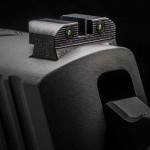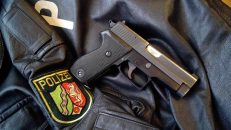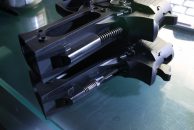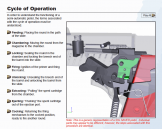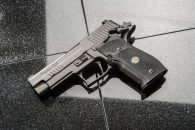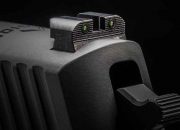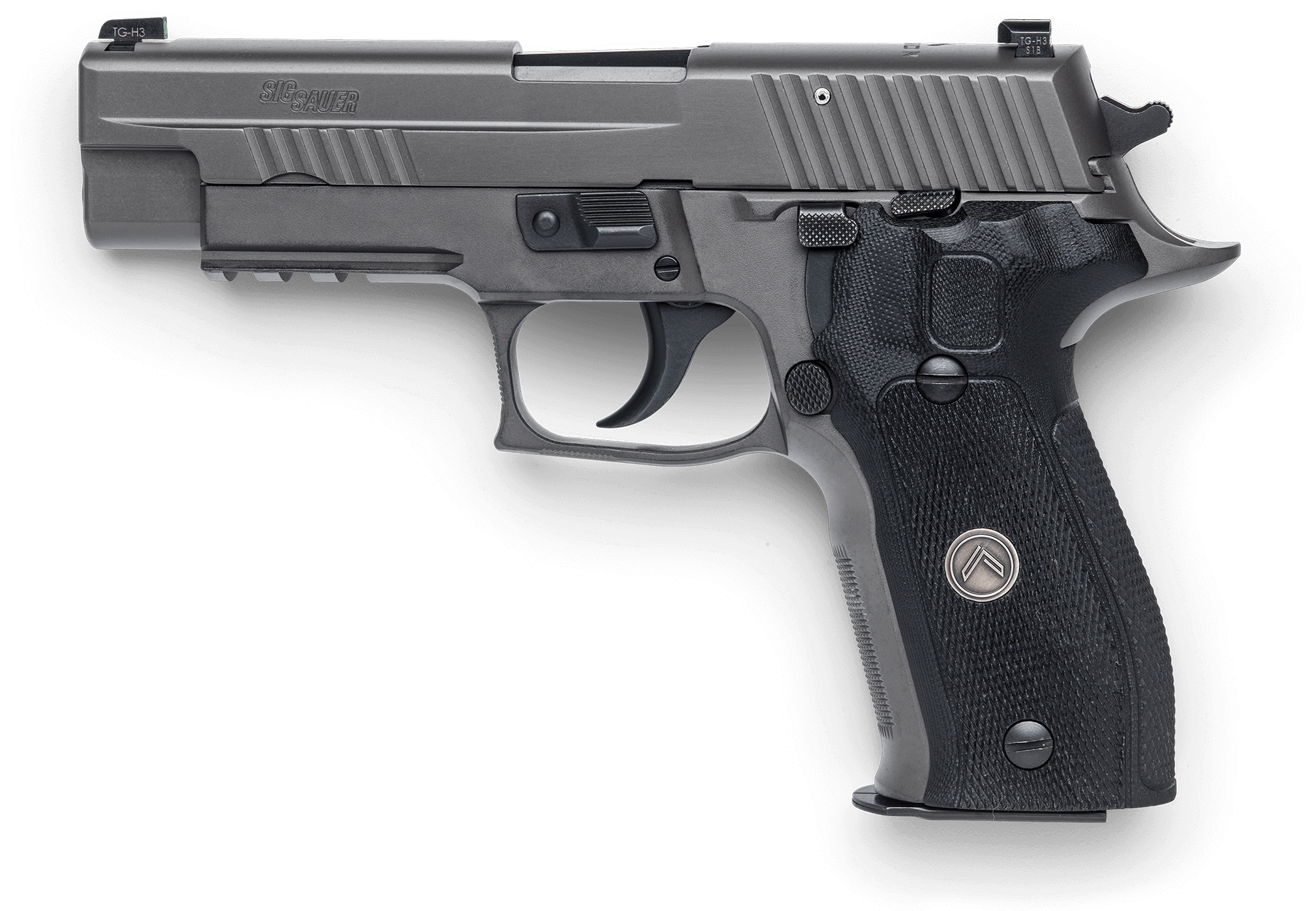
This opinion piece was written by contributing author Paul T. McCain (aka Amsdorf) and is re-printed here by permission.
“Why would I want to buy a LEGION? It’s just a bunch of marketing hype! It’s stupid. I don’t need one. Just a waste of money.”
We hear these comments regularly when the SIG Sauer LEGION is discussed. In fact, I was one of the people saying these very things. Because this type of comment comes up on forums and Facebook groups (like the SIG Sauer Legion Owners group) fairly regularly, I’ll document my journey to a LEGION so hopefully it might help others considering which model of SIG handgun to buy. I’m sitting here with the latest SIG catalog next to me — it’s enough to make your head spin; so many options! Which is good in a way. I mean, if you cannot find a SIG that is for you, I’d say you are just not looking hard enough.
My LEGION Journey: From Skeptic to Buyer
My experience with SIG handguns started when my son, when he was old enough to purchase a handgun, did a lot of research (like father, like son!), decided on a SIG, and purchased a “standard” P226 with no frills. We took it out to the gun club together and experienced some major failures to fire which we were able to trace back to the Checkmate mags that came (at the time) with SIGs. We replaced those with MecGar magazines and he was off and running — and has never looked back. I was able to shoot it many times, but at the time I was heavily invested into Glocks, so I didn’t buy one for myself.
But I eventually relented and picked up a West German SIG P220. Loved it. Shot it a while. Sold it. I preferred 9mm and more capacity. Picked up a SIG P226 Tactical. Loved it. Shot it a while. Sold it. Just didn’t like the fact I was attracted to that slide release like a moth to a flame. Bought a couple others, sold them. I bought two more SIGs, including a P226 MK25. Enjoyed them, sold them, just did not like the triggers, the sights, the ergo of the grip, and that darn slide release problem.
A couple years went by. Fast forward to about six months ago, when I began hearing about SIG’s LEGION series. I visited a popular SIG discussion forum and was immediately turned off by what struck me as a truly laughable marketing campaign that made buying a handgun seem like I was joining some kind of cult or cool-guy club. I’m not into cults, and I’ve never been accused of being a “cool guy…” so I laughed it all off and even took a few swipes at the LEGION series being nothing more than SIG doing its marketing thing, which they are very good at, of course.
But folks responded to me kindly, didn’t bite my head off, and calmly and courteously told me why they went with a LEGION. They took the time to explain to me all the features of the LEGION series that, if I were to try to upgrade any other SIG with them, I would end spending a boat-load of bucks. And then it all clicked for me. After shooting handguns for long enough to know what I need to do my best, I realized the feature set of the SIG was what I was looking for.
I’d always had a fondness for SIGs and had shot and handled enough to know they were, and are, great handguns. But when I began looking very deliberately and seriously at the LEGION, I was convinced they were for me. I’ll list the features that attracted me most to the LEGION and explain each one’s benefits as I perceive them, and as I’ve now experienced them.
1. Undercut Trigger Guard
I have very large hands. XXL gloves are always too tight or very uncomfortable. I need all the help I can get getting my gorilla hands on and around my handguns and the undercut on the trigger is a real “must” for me, and is something I always did to all my Glocks using a Dremel. Not pretty, but effective. The LEGION ergonomics are perfect for me. I would want this on any SIG I would ever use.
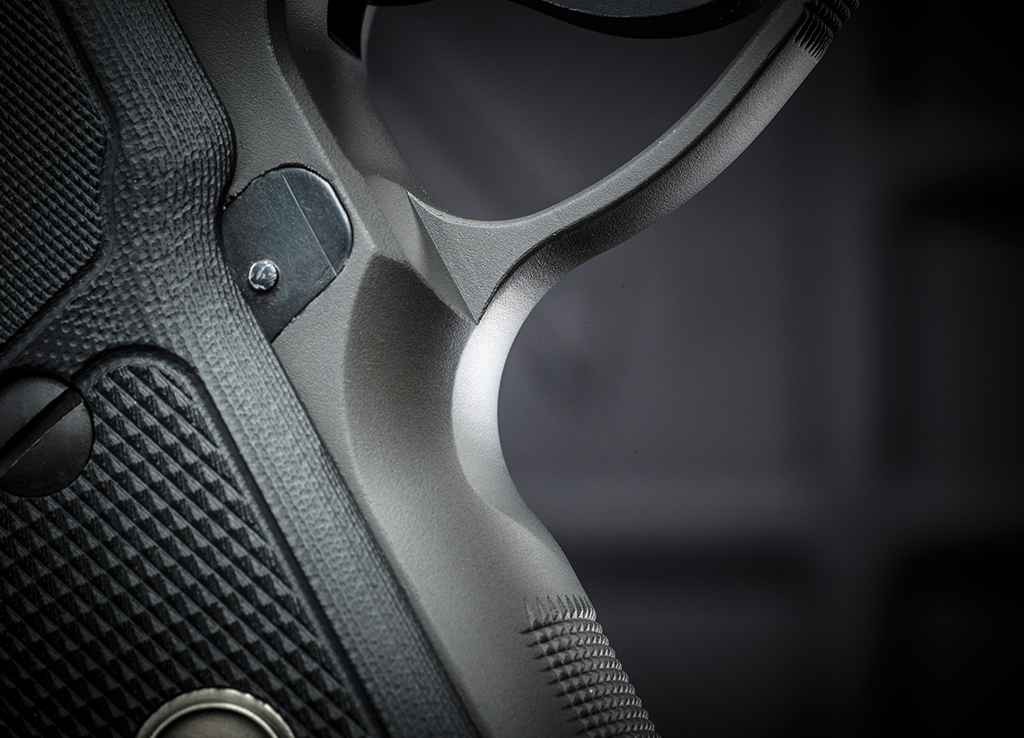
The Legion’s frame is relieved under the trigger guard
2. Sights
I’ve learned through hard lessons how important good sights are for effective, fast, and accurate combat style handgun shooting. I say this after having personally installed dozens of sights on many handguns. The SIG LEGION’s front sight is the best I’ve ever used, and I’ve tried most of the major brands: Ameri-Glo, Trijicon, FiberOptic, etc. etc. etc. SIG’s front sight is fantastic. For me, I had to get enough trigger time, training, and experience to fully appreciate the critical importance of the front sight post and ease of getting a good working sight picture. SIG gives the LEGION sights the name: SIG SAUER® Electro-optics X-RAY™ High Visibility Day/Night Sights…yowzers. Whatever. More hype. No idea what is “electro” about the optic, but … hey, just ignore that. The sights are awesome. I’m talking mostly about the front post, but the rear sights are equally impressive with, again, just the right combination of width and depth to facility fast sight picture acquisition and accuracy. It’s often a compromise between those two with iron sights. I really feel SIG has hit the sights on the LEGION out of the park.
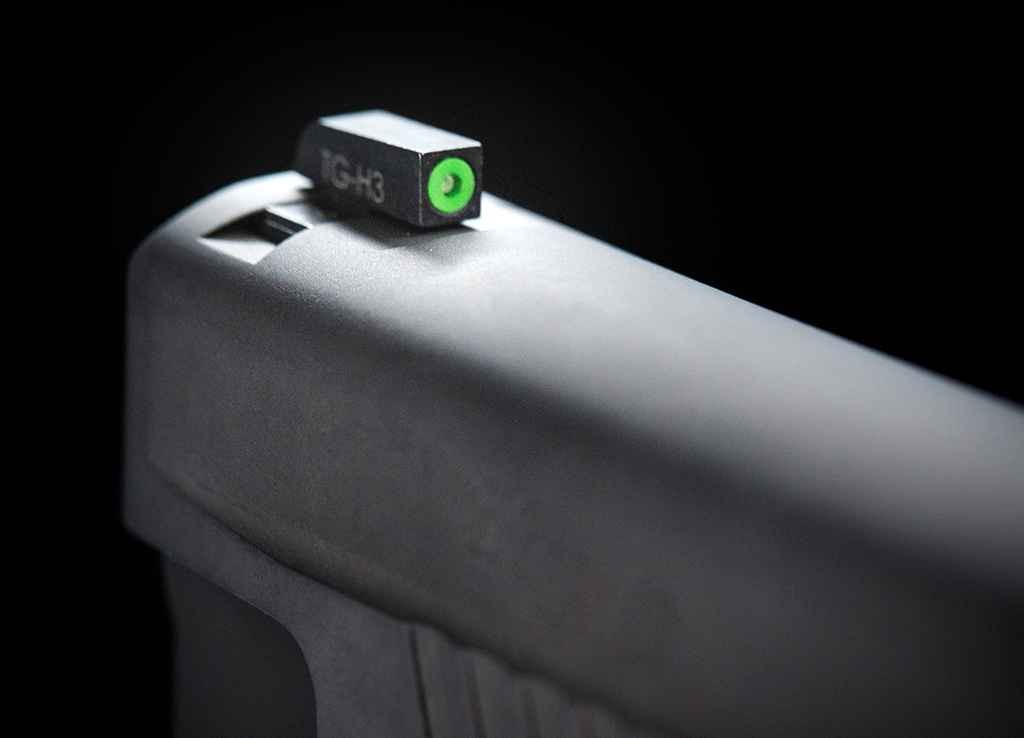
X-RAY high contrast day/night front sight
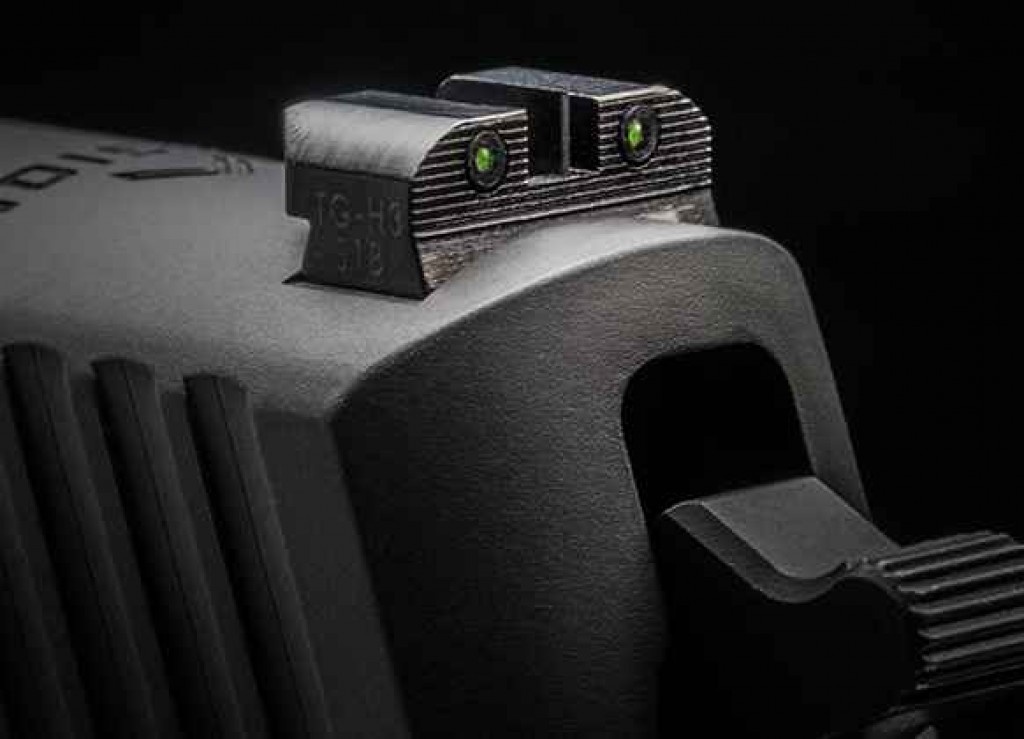
X-RAY Blacked-Out Day/Night Rear Sight
3. Trigger
Ah, the trigger, truly the holy grail of the handgun. The LEGION trigger is, without a doubt, the finest out-of-the-box DA/SA trigger on any handgun I’ve ever shot. And again, I’ve shot a lot of handguns. I’ve purchased many brands, many triggers. The very finest trigger on any handgun is a single action trigger on a 1911 that has been finely honed, polished and adjusted by an expert 1911 gunsmith. Nothing finer, hands down. But…after that, the SIG LEGION trigger (actually a Bruce Gray P-SAIT trigger) with a factory action hone is the finest I’ve ever used. If I want a better trigger, I’d have to send it in to Gray or Langdon for some even better custom work on the action, but … the action of the LEGION is truly astounding. The trigger as it comes with the LEGION is, in my opinion, the most important feature. The LEGION trigger will either make you weep with joy or giggle like a little school girl when you experience the reset, or neither (if you don’t want us to know, just go with “neither”).
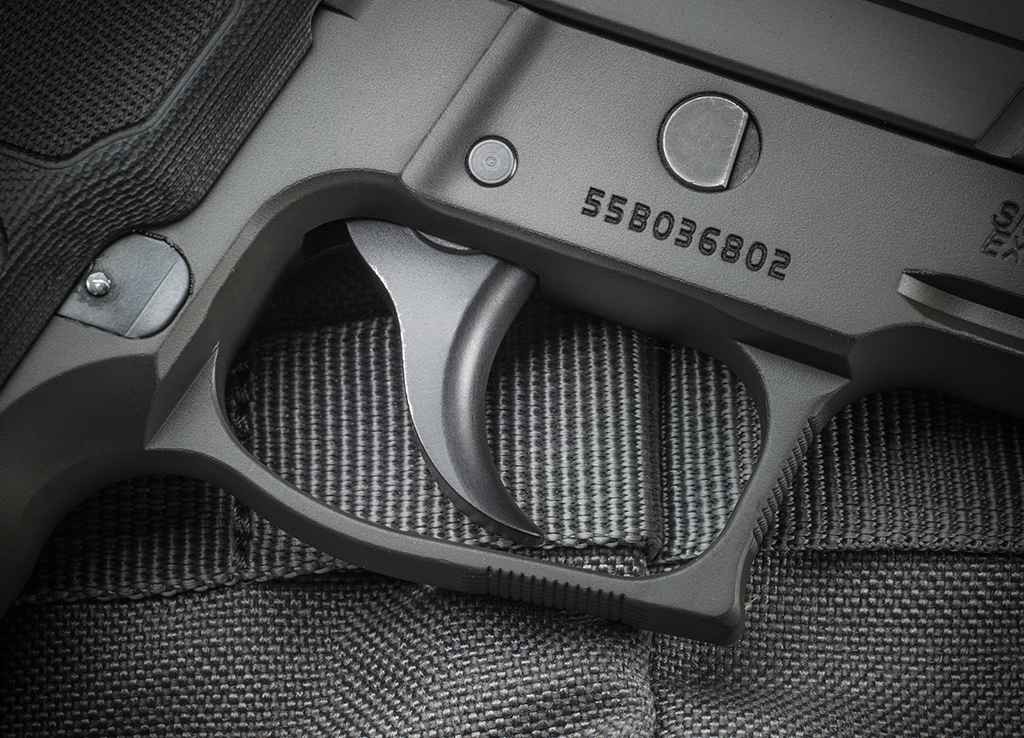
The Grayguns Intermediate Reach Adjustable Trigger works perfectly in the Legion
4. Beavertail
The LEGION beavertail is a nice compromise between the minimal beavertail on regular SIGs and the larger and more pronounced beavertails on the “Elite” series models. I like the LEGION setup because it provides what I want and need for a high grip, without causing me problems using my Safariland SLS holster with it. Very nice form and function, it falls into the “just right” category for me.
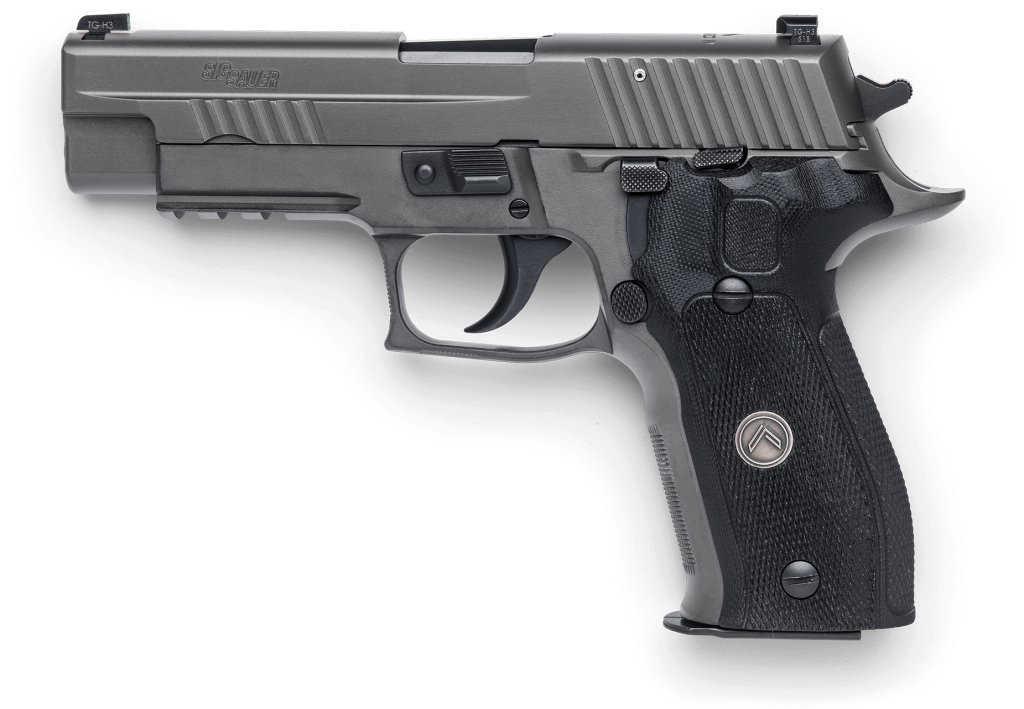
P226 Legion with a medium beavertail — it’s juuuust right!
5. Grips and Frame Checkering
The grip and the checkering on the frame of the SIG LEGION makes it extremely comfortable to shoot bare-handed for me. Again, I’ve experimented with a lot of after-market grip tapes and stippling, etc. on many Glocks (which nearly demand such), and the LEGION grips and checkering on the front, backstrap, and under the trigger guard just blow them all away.
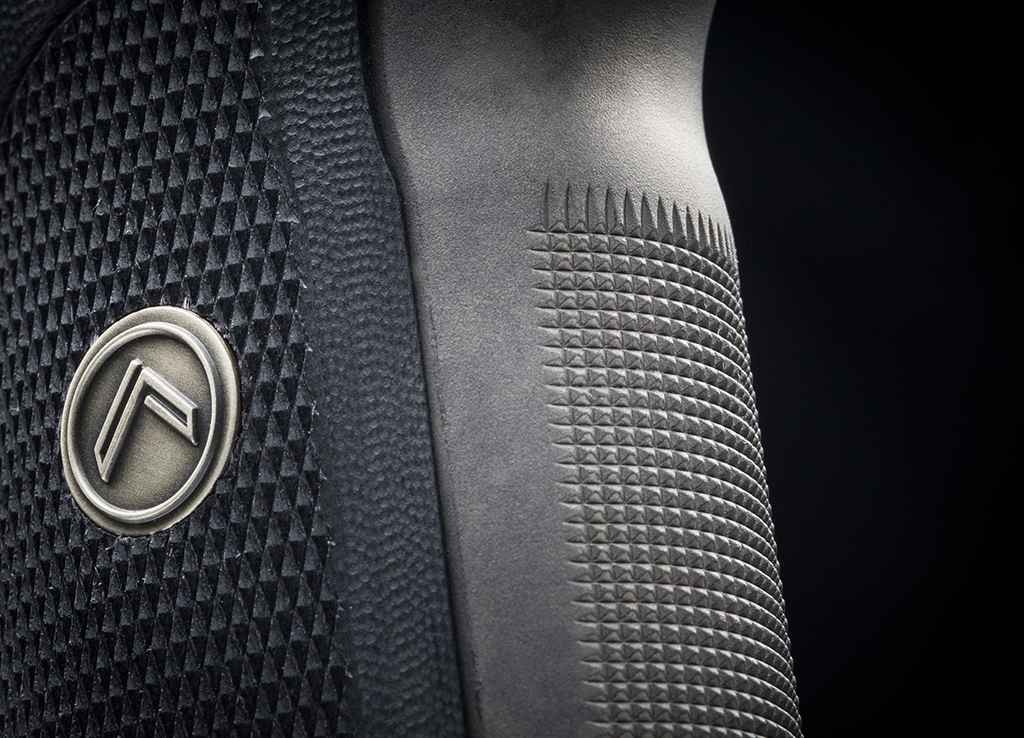
Legion’s enhanced checkering
6. Low Profile Slide Catch and Decocking Levers
Not many people realize that the reason Glock became so popular so quickly, aside from Glock’s massive marketing efforts, including a lot of unsavory “incentives” offered at various trade shows, was the fact that the Glock was a good transition for guys used to revolvers. Pull the trigger and it fires. The SIG DA/SA approach, for me, is a good compromise between a weapon with no safety and one with a safety. As a Glock guy for most of my handgun shooting experiences, I wanted a handgun that could be drawn and fired, without a manual safety, but the levers on the standard SIGs I had owned were just large enough to get in the way of my monster hands and fingers and I always rode the slide lock. I know, I know… training would have prevented all this, but the low profile levers on the LEGION series are just what the doctor ordered for me. So, another big plus here, out of the box.
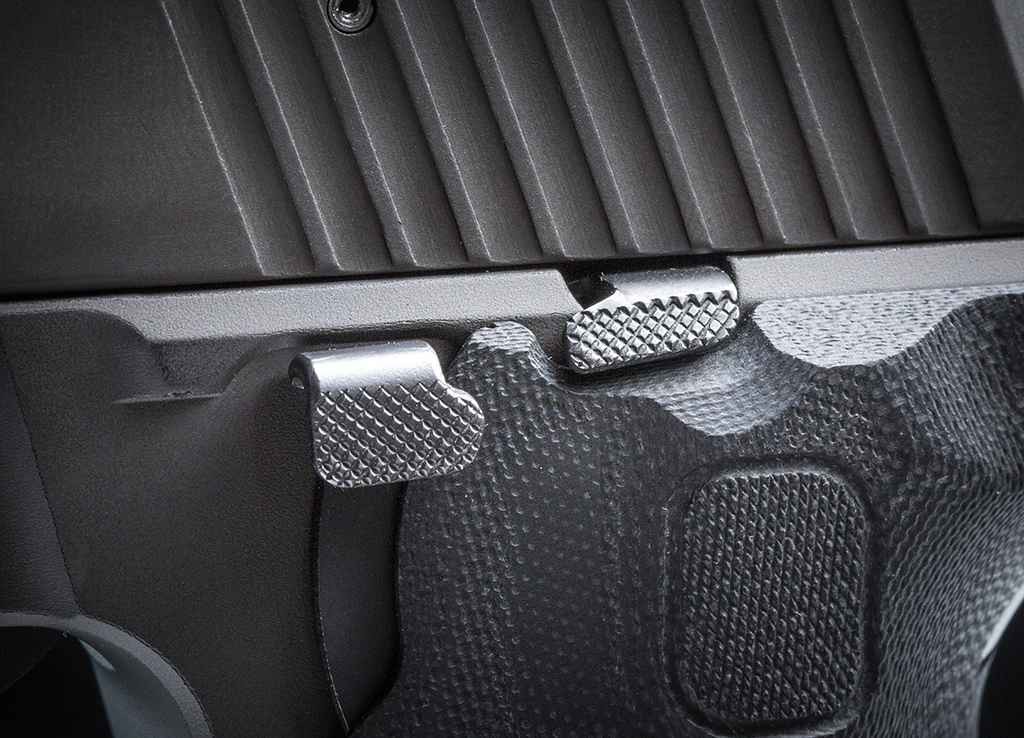
“Low Profile” Slide Catch and Decocking Levers on the P226 Legion
7. PVD Finish
I’m not going to talk much about the PVD coating or whatever they call it. Experts can tell you all about why a PVD finish is better than Cerakote or whatever…it’s all chemistry, science and voodoo magic with probably quantum physics thrown in for good measure. But it is a great finish. Here’s how one site explains what it is and what it does: “Physical Vapor Deposition (PVD) has been around for decades primarily in military applications original designed to decrease friction wear on metal parts. It bonds a micron thick layer of metal compounds to metal or other materials.” OK, sounds good.
Adding it All Up
Add all these features up and do the math. If you were to take a stock P226, new, and send it out to various vendors to have all these features added (or even do it yourself like Ferrari Steve did) to it you would end up spending a heck of a lot more than if you were to have simply purchased a LEGION to begin with. A lot more. Are these features you want or feel you have need? For me the answer was yes, based on my shooting experiences and what I have learned works best for me: super sights, super trigger, superior ergonomics. Those three are my “biggies.” The LEGION has delivered, many times over.
Let’s just do a bit of math together.
I checked GUNWATCHER for a “going price” on a good SIG P226 (they are all good!). Let’s take a SIG P226 MK25 that I found on Gunbroker for $850.
Add:
- Sights upgrade to XRay: $135 (assuming you can install them yourself).
- Gray Guns intermediate trigger upgrade and action work: $250 (probably more, but I’m lowballing it)
If you stopped here, that’s about $384. Add $384 to $850 = $1,234
You’ve just spent more than a LEGION would have cost you! There is one right now on Gunbroker for $1,125.
But let’s take it further and add more to your non-LEGION P226 to get it as close to a LEGION as possible
- SS Guide Rod: $25
- Replace decocker and slide stop levers and mag button: $45
- Replace take down lever: $30
- G-10 grips (as close to the LEGION as available): $100
- Frame undercut and checkering: $200
- PVD Coating: $235
Now you’ve just put in another $635, and you still don’t have a LEGION.
Total price to upgrade another stock P226 to as close to a LEGION as you can get? About $1,869.
Now include shipping for all the parts, and the FFL transfer fees, and you will have spent $2,000 for a “do-it-yourself” LEGION-esque P226.
This is what led me to buy a LEGION.
Here is another excellent article with videos, that documents what is involved in taking a stock SIG P226 and upgrading it to match a LEGION. It offers conclusive proof that the LEGION series represents an excellent value, since trying to match the LEGION with a DIY requires a person to spend more money than simply buying a LEGION. Here is how Ferrari Steve breaks down the costs involved in upgrading an existing P226, and note: it still will not match the LEGION. And, I’d argue that he needs to include a SIG shop action tune, so add another $200 to the list. AND….here is another high-ticket thing Steve acknowledges he does not include in his break-down: a PVD finish and the milling work required to match the LEGION’s slide and frame. You can assume at least another $500 for that work.
In other words, if you do in fact try to match a LEGION using a used P226, you can take the price of the used P226 and add another $1700 to it, so you are looking at, let’s say, a total of $2,100.
Or you can buy a LEGION P226 for around $1,200.

